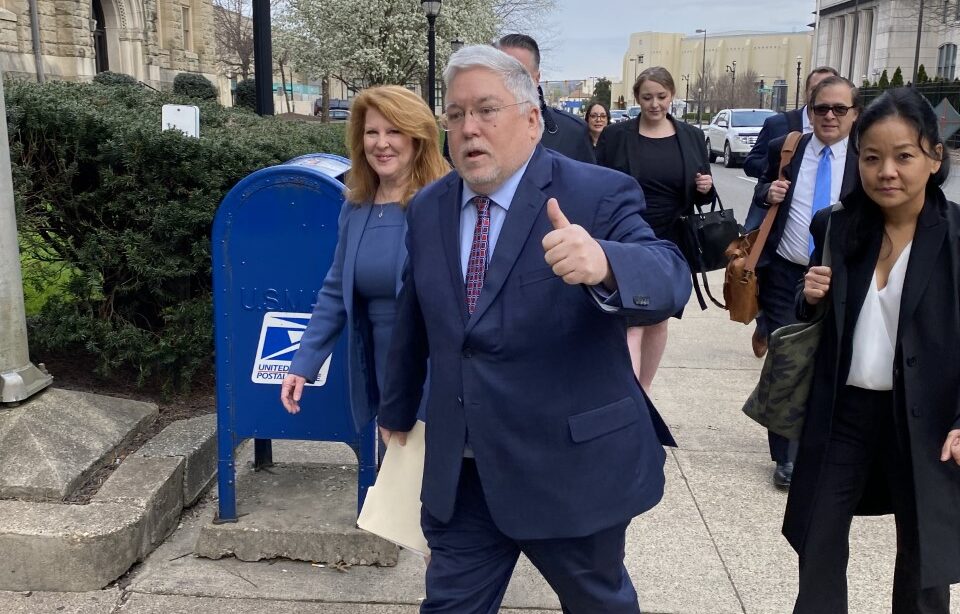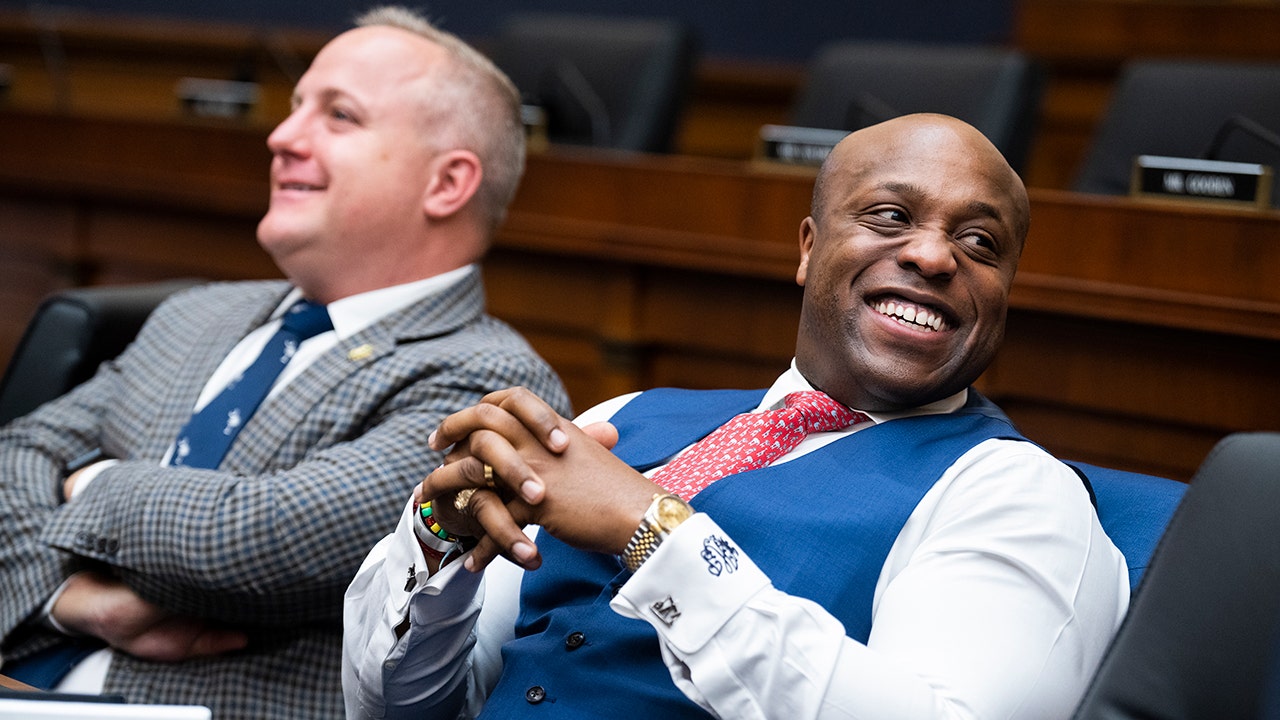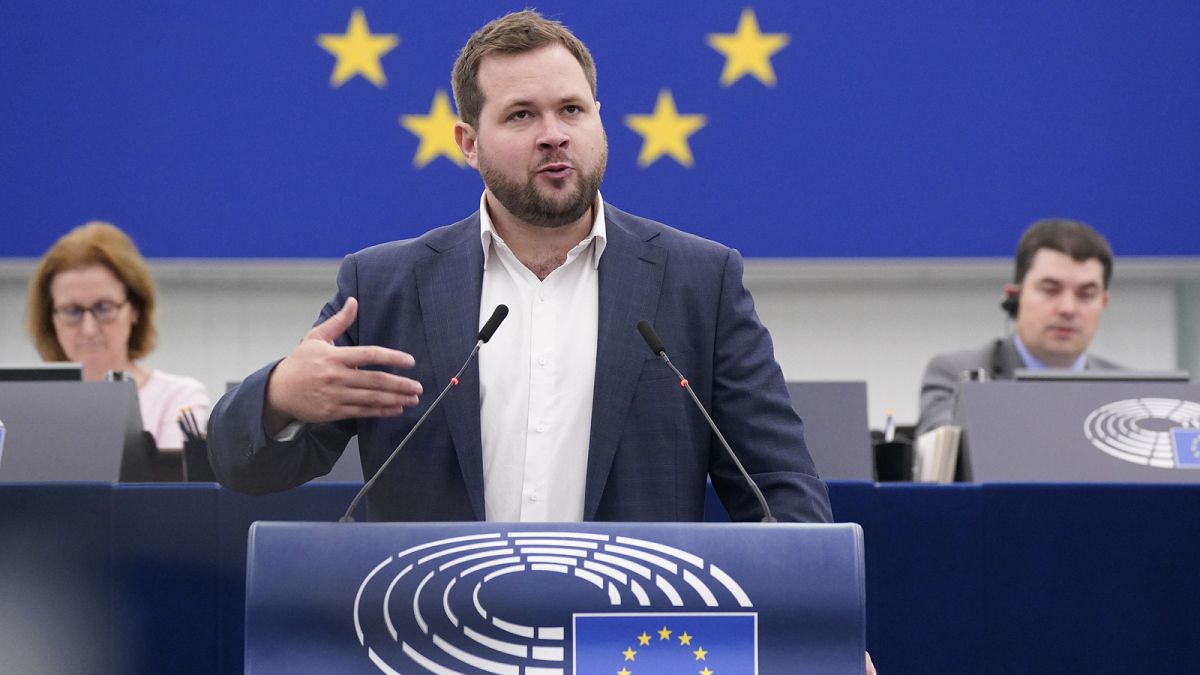Business
Studio owners revise plans for $1-billion update of historic Television City

The owners of Television City have scaled back their plans to enlarge and modernize the landmark Los Angeles studio where CBS began making shows to broadcast nationwide at the dawn of the television age.
Formerly known as CBS Television City, the studio sits next to popular tourist attractions the Original Farmers Market and the Grove shopping center in the Fairfax district where it has been operating since 1952 as a factory for such hit shows as “All in the Family,” “Sonny and Cher” and “American Idol.”
CBS sold the famous studio for $750 million in 2019 to Hackman Capital Partners, one of the world’s largest movie lot owners and operators. CBS continues to occupy Television City as a tenant.
An architect’s rendering of the planned office and production space at Television City, an entertainment studio in the Fairfax district of Los Angeles.
(Courtesy of Foster + Partners and Television City)
Hackman Capital announced a $1.25-billion plan two years ago to expand and upgrade facilities on the lot at Beverly Boulevard and Fairfax Avenue in hopes of harnessing strong demand in the region for soundstages, production facilities and offices for rent on studio lots.
Hackman Capital on Friday will update its application to the city to enhance the studio, saying it is responding to feedback about the project from nearby residents, stakeholders and city officials. If approved, the new project is expected to be completed by 2028.
The studio owners also brought in a new design architect, Foster + Partners. The London-based firm is led by Norman Foster, a prominent architect whose designs include the pickle-shaped Gherkin skyscraper in London and the master plan for the $2-billion One Beverly Hills condominium and hotel complex under construction in Beverly Hills.
Hackman Capital, which operates studios in the U.S., Canada and U.K., is also responding to changing conditions in the office rental market, which has contracted since the COVID-19 pandemic drove many companies to work remotely at least some of the time. Plans still call for creating new offices, but there would be fewer of them.
Foster’s new design eliminates a 15-story office tower on the west side of the lot, cutting 150,000 square feet of offices to rent to entertainment-related firms. Another 15-story office tower remains in the plan, but other building heights have been lowered, particularly along the perimeters, Hackman Capital said.

An architect’s rendering of plans for Television City.
(Courtesy of Foster + Partners and Television City)
The plan still represents an addition of more than 980,000 square feet to the 25-acre site at Beverly Boulevard and Fairfax Avenue that retains a suburban-style low-density appearance with soundstages, low-rise offices and support facilities flanked by asphalt parking lots.
The company’s proposal calls for combining old and new space to create 700,000 square feet of offices to support production on the lot and an additional 550,000 square feet of offices for rent to entertainment and media companies, the company said.
Office space behind studio gates is in high demand in the Los Angeles area and has been snapped up at other studios by such big Hollywood players as Netflix and Amazon.
“The industry wants to have a location where they can do production and have offices in a self-contained campus environment,” said real estate broker Jeff Pion of CBRE, who represents Hackman Capital. “Having all of the different components that make up production in one location is very attractive to the industry.”
Plans for Television City also call for a new commissary and more than four acres for production base camps. The streetscapes would be improved to be more visually appealing to passersby, with wider sidewalks.
On Fairfax Avenue, where pedestrians now pass by a fenced parking lot, there would be shops and restaurants serving the public on the ground floor of office buildings that could be reached only from inside the lot.
The separation is part of the balancing act Hackman Capital is attempting to make Television City feel more friendly to the neighborhood while retaining the security and exclusivity of a closed campus that appeals to celebrities and others who make movies and television shows.
Landlords can also charge a premium for office space on movie lots because they are close to the action for independent production companies and offer the cachet prized by many in the entertainment industry.
Filming activity in Los Angeles has fallen off substantially in the wake of strikes by writers and actors last year, according to FilmLA, a nonprofit organization that tracks on-location shoot days and filming permits in the region. The downward trend compounded a dip that emerged in late 2022 as on-location filming in Los Angeles took a dive as studios pared back movie and TV production that surged during the COVID-19 pandemic.
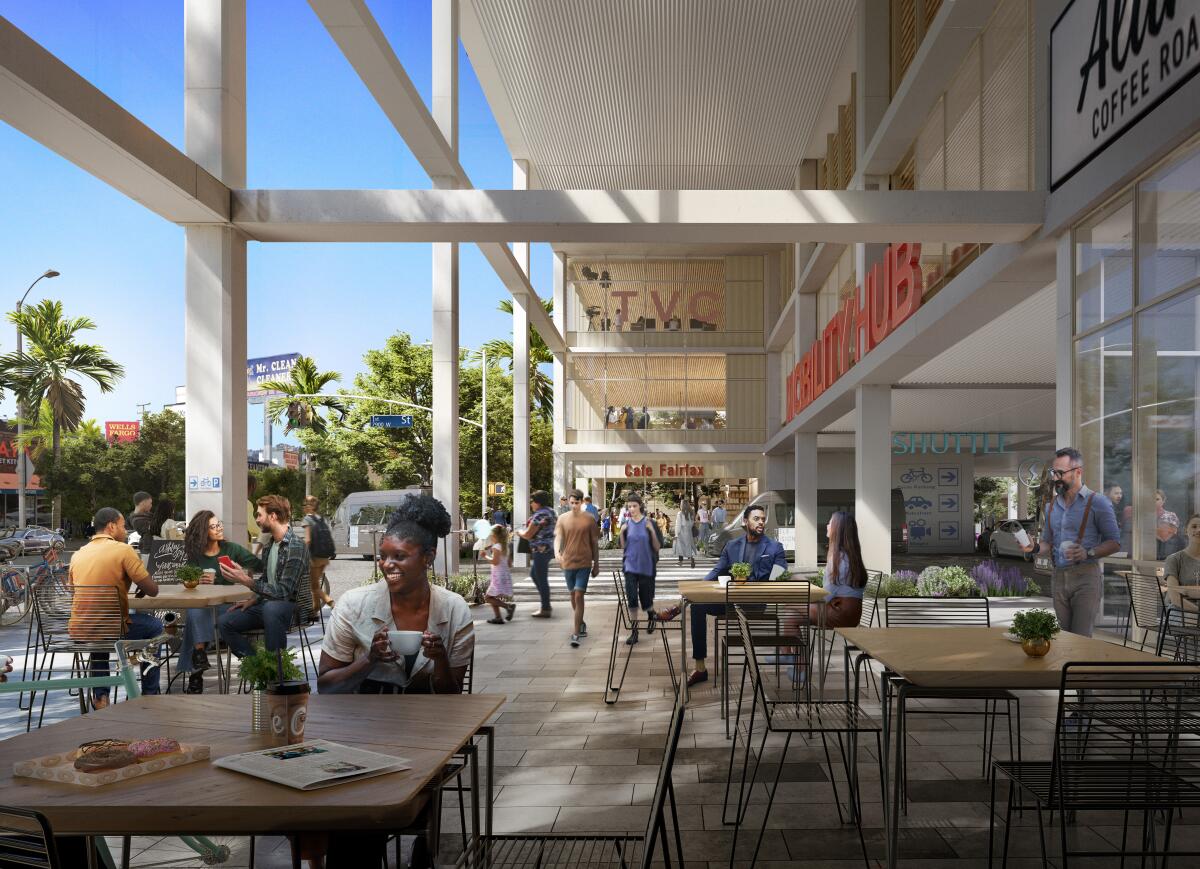
A rendering of the entrance to the planned mobility hub on Fairfax Avenue where shuttle buses from a nearby subway station would come and go.
(Courtesy of Foster + Partners and Television City)
California is finding it particularly hard to rebound from the strikes because it’s more expensive to shoot here, multiple production executives told The Times. That makes Los Angeles less attractive to studios looking to cut costs after major industry disruption.
To Hackman Capital Chief Executive Michael Hackman, the downturn and filming pullback from California suggest that regulators and studio operators should further support production companies.
“Our actual customers tell us all of them want to stay in Los Angeles,” he said. “We have the best crews in the world here, but we don’t have enough modern soundstages in premier locations. We also have to push the state on tax incentives so that we don’t lose business outside of the city.
“The entertainment industry is our city signature industry and if we don’t invest in the future, we’re really at risk of losing it,” Hackman said. “We’re still emerging from a once-in-a-generation dual strike. And the production stoppage cost Angelenos approximately $6.5 billion or more in lost wages and economic activity, which makes it clear how important this industry is to our city, and especially the people who work in entertainment every day.”
Hackman Capital’s proposal calls for raising the number of Television City stages to at least 15, from 8, along with production support facilities.
To make room for the planned additions, parking would be converted from surface lots to garage structures and underground spaces capable of parking 4,930 vehicles.
Two stages built in the 1990s on the east side of the lot would be demolished as part of a planned reconfiguration of the site.
The four original stages built by CBS in 1952 would be preserved along with other historical design elements created by Los Angeles architect William Pereira, who also designed such noteworthy structures as the futuristic Theme Building in the middle of Los Angeles International Airport and the Transamerica Pyramid office tower in San Francisco.
Pereira’s long-range plan for Television City conceived in the 1950s was expansive, said Bob Hale, creative director of Rios, the master plan architect of Hackman Capital’s proposed makeover. Hale said Pereira’s original concept called for the complex to grow to 24 stages and 2.5 million square feet of production space, including several multistory office buildings.
“It was built in a way that it could be disassembled and incrementally extended,” Hale said. “For a number of reasons, that didn’t happen.”
In an effort to make it happen now, Hackman Capital set out to get the support of Councilwoman Katy Yaroslavsky and the surrounding community. Over five years, the company met with nearly 3,000 neighbors, Hackman Capital said.
Among the groups supporting the project are the Holocaust Museum LA, Los Angeles Conservancy, Los Angeles/Orange Counties Building and Construction Trades Council, Mid City West Neighborhood Council and FilmLA, Hackman Capital said.
The first proposal drew fire from neighboring businesses the Grove and Farmers Market, which sent letters to residents in 2022 calling the Television City project a “massively scaled, speculative development which, if approved, would overwhelm, disrupt, and forever transform the community.”
In July 2022, an executive representing Grove owner Rick Caruso appeared before a committee of the Mid City West Neighborhood Council and said the Television City project would create “complex” issues for the neighborhood, including traffic, parking and construction. Caruso himself has said he does not oppose the redevelopment of Television City.
The Beverly Fairfax Community Alliance, which was founded by the Grove and Farmers Market, has been more blunt, warning that the expanded site would clog Fairfax Avenue, Beverly Boulevard, La Brea Avenue and 3rd Street with traffic.

The signature red awning at Television City as seen from Beverly Boulevard.
(Courtesy of Foster + Partners and Television City)
“Even those accustomed to living with L.A. traffic and parking nightmares will be shocked at how much worse it can be,” the group said on its website.
To address such concerns, Hackman Capital said the new plan will reduce the number of estimated daily car trips to Television City by 5,000 to 8,700. The landlord also plans to move its “mobility hub” from The Grove Drive on the east side to Fairfax at 1st Street on the west side of the lot. The mobility hub would serve public transit, rideshares and other passenger drop-offs as well as employee shuttle buses to the subway stop being built at Fairfax and Wilshire Boulevard.
“Our goal with Television City, particularly along the perimeter on our public edges, was to find a really great interface with the community. So it wasn’t just a studio with a blank wall, but we were active and engaged,” said Brian Glodney, a development executive for Hackman Capital.
Community members told Hackman Capital said they want the streets outside the studio to have a sense of connection between mom-and-pop businesses on Fairfax, the Farmers Market, the Grove and Pan Pacific Park, Glodney said.
Outlets on the edge of the lot such as shops and restaurants will be limited to a total of 20,000 square feet, he said, “just enough to help activate the streets but not compete with our neighbors.”

Business
Tesla to cut 601 jobs in Bay Area, a sign of more problems for EV maker
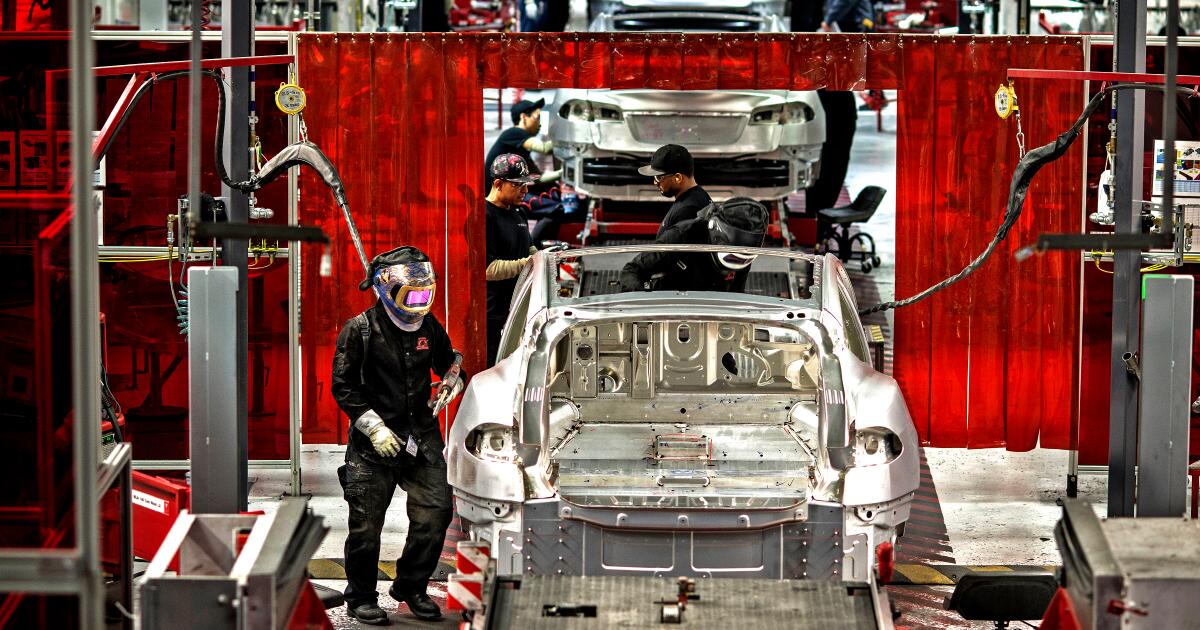
In the fourth straight week of layoff announcements, Tesla said it is now concentrating on reducing staff at its Bay Area facilities as part of a larger move to cut jobs globally.
State filings show that Tesla is planning to lay off 378 employees at its Fremont facilities and 233 at its Palo Alto offices.
The layoffs will occur over a 14-day period starting June 20.
An email to Tesla officials requesting comment was not immediately returned.
The layoffs come as the company struggles with flagging sales, top executives fleeing, a declining stock price and quality problems with the new Cybertruck. The low-cost Model 2 recently promised by Chief Executive Elon Musk also appears to be dead.
It is not immediately clear which positions are being cut. The San Francisco Chronicle reported they would include technicians, electricians, software engineers, plumbers and athletic trainers.
On April 15, Musk announced in an email to staff that Tesla was cutting more than 10% of its workforce, citing job overlap and the need to reduce costs.
A week later, Telsa said it was laying off 3,332 workers at its facilities and offices in Fremont, Palo Alto, Burbank and Lathrop.
Including the latest cuts, Telsa has announced 3,933 layoffs this year in California.
“As we prepare the company for our next phase of growth, it is extremely important to look at every aspect of the company for cost reductions and increasing productivity,” Musk wrote in the April email.
“As part of this effort, we have done a thorough review of the organization and made the difficult decision to reduce our headcount by more than 10% globally,” he continued. “There is nothing I hate more, but it must be done.”
Business
ChatGPT's new voice mode is giving 'Her' vibes

The days of an interactive, almost-human virtual assistant could be coming sooner than you think.
Tech company OpenAI has unveiled the latest update to ChatGPT, which now includes a voice mode that allows users to communicate more conversationally with the AI system. In a video posted Monday on X by OpenAI Chief Executive Sam Altman, company officials ask ChatGPT to tell them a bedtime story involving robots and romance.
“Ooh, a bedtime story about robots and love?” ChatGPT responds in a cheerful female voice. “I’ve got you covered!”
The system proceeds to tell a story about a curious robot “in a world not too different from ours,” and then pivots to different voices when company officials periodically interrupt to ask it to speak more dramatically, in a robot-like voice or in a sing-song way.
The new update, known as GPT-4o, quickly received comparisons to the 2013 Spike Jonze movie “Her,” starring Joaquin Phoenix, in which a lonely man falls in love with his virtual assistant Samantha, voiced by Scarlett Johansson. Even Altman appeared to refer back to the film, saying in a blog post that it “feels like AI from the movies; and it’s still a bit surprising to me that it’s real.”
(But that movie isn’t entirely rosy about AI taking on the role of a human companion, cautioned Wired Executive Editor Brian Barrett in a column titled “I Am Once Again Asking Our Tech Overlords to Watch the Whole Movie.” In the column, Barrett notes that at least one OpenAI employee heeded that advice. He quoted a tweet in which the employee said that re-watching “Her” “felt a lot like rewatching Contagion in Feb 2020.” )
“Getting to human-level response times and expressiveness turns out to be a big change,” Altman wrote.
Previous versions of ChatGPT were text-based, with users typing questions to the system and receiving written responses instantly. Past attempts to make the system give more human-like responses, beyond simple fact regurgitation or rudimentary stories, were largely rebuffed by ChatGPT.
Though bedtime tales about robots and love seem benign, AI and its potential effect on jobs is a pressure point in Hollywood and played a major role in last summer’s dual strikes led by the Writers Guild of America and the Screen Actors Guild-American Federation of Television and Radio Artists.
OpenAI, in particular, has not been shy about courting the entertainment industry and has met with studio and talent agency executives to discuss another of its products, Sora, an AI tool that uses text-based prompts and turns them into visuals that can be cinematic in quality.
Recently, indie pop artist Washed Out used Sora, which is not yet publicly available, to create a four-minute music video for the song “The Hardest Part.” The music video zooms through scenes from a couple’s life that are completely AI-generated.
Beyond Hollywood, other industries are also flirting with AI, such as fast food operators. Those businesses are now looking to AI to run drive-through orders or walk-up self-service kiosks to reduce the financial effect of California’s new $20 minimum wage for restaurant workers in certain establishments.
Business
Pro-Palestinian activists protest at Google developer conference amid Israel-Hamas war

Dozens of protesters blocked the entrance of Google’s developer conference in Mountain View, Calif., for roughly 90 minutes on Tuesday, demanding that the tech giant drop its work with the Israeli government amid the country’s war with Hamas in the Gaza Strip.
The protest group, which accuses Israel of committing genocide against Palestinians in Gaza, held two events on Tuesday that it said involved hundreds of participants.
A group chanted “Shame on Google” and “Google Cloud rains blood” in the front of the entrance to the conference at Shoreline Amphitheatre, where the tech giant was expected to announce updates to business including its Android and Gemini AI systems. Separately, the protesters held a rally at a nearby park.
The protesters, who call themselves No Tech for Genocide, have been demanding that Google end its cloud computing contract with the Israeli government, known as Project Nimbus.
The latest Israel-Hamas war began when Hamas militants attacked southern Israel on Oct. 7, killing about 1,200 people and taking an additional 250 hostage, according to the Israeli government. Palestinian militants still hold about 100 captives, and Israel’s military has killed more than 35,000 people in Gaza, according to Gaza’s Health Ministry, which doesn’t distinguish between civilians and combatants.
Protesters at the Google event said they believe the company’s technology is being used by the Israeli military for surveillance of people in Gaza through facial recognition, leading to the arrest and detention of Palestinians.
Google did not immediately respond to a request for comment.
The company has said that its technology is used to support numerous governments around the world, including Israel’s, and that the Nimbus contract is for work running on its commercial cloud network, with the Israeli government ministries agreeing to comply with Google’s terms of service and acceptable use policy.
“This work is not directed at highly sensitive, classified, or military workloads relevant to weapons or intelligence services,” Google said in an April statement.
One of the protesters at the Tuesday conference was Ariel Koren, a former Google employee who alleges the company retaliated against her in 2021 after she raised concerns about the contract. Google said at the time that it had investigated the case and found no evidence of retaliation.
“We want to make sure that every single person who comes here and who might think that today’s a day about celebrating technological advancements — every single one of those people needs to understand that the reality is much darker than what Google has painted,” Koren said.
Organizers estimated that 50 people participated in the demonstration in front of the conference. The rally at the park drew a bigger crowd.
One of the participants objected to Google holding its conference the day before Palestinians commemorate 76 years since their mass expulsion from what is now Israel. Palestinians refer to their displacement during the 1948 Israeli-Arab war as the Nakba, which is Arabic for catastrophe.
The protest in front of the Google I/O conference began at around 9:30 a.m., with protesters moving toward a bag checkpoint. Conference attendees had been asked to take out their laptops and have their bags searched.
The event’s security closed the entrance as protesters moved to stand in front, leaving a large line of attendees who were later directed to another area to proceed to the conference. A line of protesters held a red sign that proclaimed “Google Stop Fueling Genocide.” The demonstration ended at about 11 a.m.
Google’s developer conference draws thousands of people each year, many of whom are developers eager to learn about the company’s latest technology.
After witnessing the protest, several attendees said they planned to do more research on Project Nimbus.
“I feel that it is worth a shot to listen to others when they have a point of view,” said Andres Haro, a 30-year-old software security engineer from Utah, as he waited in a long redirected line into Google I/O’s entrance.
The protest comes after more than 50 Google employees were fired following sit-ins and protests that took place at Google office locations last month protesting Project Nimbus. Google said it terminated those workers after an investigation determined they were involved in disruptive activity that violated its policies governing employee conduct.
A spokesperson for the group behind the sit-ins, called No Tech for Apartheid, said they were not involved with Tuesday’s protest.
“We’re asking more questions about what role we and our employers are playing in the world,” said Roni Zeiger, a product developer who participated in the rally on Tuesday at Charleston Park, near the Google event. “World events have continued to evolve and … people, including employees, are asking harder questions and wanting to work at places that are consistent with their values.”
-

 Politics1 week ago
Politics1 week agoHouse Dems seeking re-election seemingly reverse course, call on Biden to 'bring order to the southern border'
-

 World1 week ago
World1 week agoStand-in Jose Raul Mulino wins Panama presidential race
-

 News1 week ago
News1 week agoCompass Direct LLC’s 2024 Registration in North Carolina
-

 World1 week ago
World1 week agoTech compliance reports, Newsletter
-
News1 week ago
UCLA to resume in-person classes after Gaza protest crackdown
-

 News1 week ago
News1 week agoColumbia University cancels its main commencement ceremony after weeks of turmoil
-

 News1 week ago
News1 week agoMan, 75, confesses to killing wife in hospital because he couldn’t afford her care, court documents say
-

 Politics1 week ago
Politics1 week agoPresidential polls show deadlocked race as party conventions quickly approach













